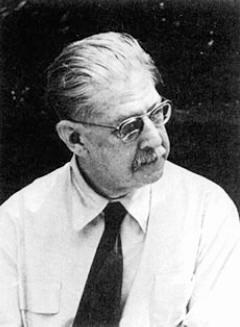Grid of the Gods (52 page)
Authors: Joseph P. Farrell,Scott D. de Hart

The first thing to observe is that the Tectratys is a two dimensional analogue of a Pyramid; it symbolizes, therefore, the primordial mound or Mount Meru of the Hindus, the primordial mound of the Egyptian
Zep Tepi
or “first time.” As such, it is a symbol of the primary scission or differentiation and the process of creation as it emerges in the physical medium. “We can already understand,” says Schwaller, “that the pyramid with square base best represents the square (base) of the four triangular Elements (its faces). Four times the triangle — this by necessity is the pyramid.”
25
Esoterically, then, the four layers of the Tectratys represents the emergence of the four elements — Fire, Air, Water, Earth — from which the ancients maintained the rest of the world, and all its
differentiations, were created by various admixtures and combinations of those four elements:
 >
>
Scwhaller De Lubicz’s Table of Correspondences of the Four Elements with the Pythagorean Sacred Tectratys
26
Schwaller comments on this as follows:
Why are the four numbers of the decade called “Elements”?
To answer, we must first of all set aside the arithmetic habit so as to see in each of these numbers, no longer the
addition
of units, but
a new entity altogether, a new unity
. There is the unity One, the unity Two, the unity Three, the unity Four. Each is a unity that in turn can give birth as a unity.
…
… the metaphysical Decade and formed matter begins only with the number four.
27
Leaving aside once again the “androgynous metaphor” that a “unity” gives birth, what does Schwaller mean by each number being a new entity, a new unity unto itself? And why should the number four signify the beginning of the material creation for this esoteric symbol and doctrine?
Let us recall a remark that Schwaller made earlier, namely, that the elemental symbol for the primordial differentiation or “primary scission” was
fire
. In other words, Schwaller, the mathematician, is saying that the Sacred Tectratys is a symbol of the topological metaphor,
and its first three differentiations or derivatives
. The number defines the
derivative
of a specific set of information, what Schwaller calls an “entity” or “unity,” in the continual process of ever more
differentiations. The number, in short, describes a node in the tree of topological descent of an entity from the medium.
But why does four symbolize, in this system, the emergence of the actual
material
creation? In my book
The Giza Death Star
I pointed out that the Sacred Tectratys also functioned not only as a symbol of the topological metaphor, but also of the emergence of
geometrical dimensions:
 >
>
The Tectratys as a Metaphor of the Emergence of Geometrical and Physical Dimensionality
28
Additionally, I also pointed out it can function as a metaphorical symbol of particle physics:
 >
>
The Tectratys as a Metaphor of Particle Physics
29
These two charts exhibit the fact that the Sacred Tectratys functions
as
a symbol of “unified intention,”
30
that is, it is yet another legacy from a Very High Civilization with a sophisticated physics. With that in mind, let us look again at the assertion that the material creation emerges with the number four, and is connected to combinations of the four “primal elements,” Fire, Air, Water, and
Earth, for these things could
themselves
be understood as metaphors for the four basic forces of the standard model of quantum mechanics: the strong and weak nuclear forces, the force of electromagnetism, and the force of gravity:
 >
>
The question inevitably arises, why need one stop with a tectratys? Why not have a Pentactys?:
31
 >
>
The answer, of course, is that there
is
no reason this cannot be done. It is, however, important to understand what
doing so
means: it means nothing less than that the Tectratys-Pentactys symbolism is a metaphor for the technique of
hyper-dimensional geometry
, as the extension of our previous table showing the geometrical-dimensional symbolism shows:
 >
>
As we shall see in chapter thirteen, there is actually a mathematical technique for describing objects — “solids” — in more than three spatial dimensions, and we shall discover profound clues
that some pyramidal structures are deliberately designed as
analogues
— there’s that key word again! — of these things.
However, we can safely say at this stage that, from the
esoteric
viewpoint, pyramids
are
analogically-conceived hyper-dimensional machines, for as Schwaller has pointed out, they are three dimensional versions of the Sacred Tectratys, and all the multi-layered symbolism and
implied hyper-dimensionality
and subtle physics metaphorically embodied in that symbol. As it is a symbol of the primary scission, of the primordial differentiation within the physical medium, as a symbol of the topological metaphor itself, this means that by implication, they are analogically-conceived machines designed to manipulate the information-creating processes of the physical medium itself.
Are there other indicators that pyramids can function as such devices? A trip to Giza will provide an astonishing answer.
 >
>
Rene Adolphe Schwaller de Lubicz
1
R.A. Schwaller de Lubicz,
Esotericism and Symbol
(Rochester, Vermont: Inner Traditions, 1985), p. 26, and R.A. Schwaller de Lubicz,
The Egyptian Miracle: An Introduction to the Wisdom of the Temple
(Rochester, Vermont: Inner Traditions, 1985), pp. 66–77, emphasis in the original.
2
R.A. Schwaller de Lubicz,
The Egyptian Miracle: An Introduction to the Wisdom of the Temple
(Rochester, Vermont: Inner Traditions, 1985), p. 7, emphasis added.
3
Ibid., p. 8, italicized emphasis added, boldface emphasis in the original.
4
Scwhaller de Lubicz,
The Egyptian Miracle
, p. 9, emphasis added.
5
Schwaller de Lubicz,
The Egyptian Miracle
, p. 9.
6
Ibid., p. 34.
7
Ibid., p. 10.
8
Ibid., p. 40, emphasis added.
9
Schwaller de Lubicz,
The Egyptian Miracle
, p. 10.
10
Ibid., p. 22, emphasis in the original.
